Thien Tho Lang is the resting place of the first emperor who founded the Nguyen Dynasty. It is a perfect combination of architecture and nature, a beautiful landscape painting of majesty, poetry, wildness and also a bit of a ghost story.
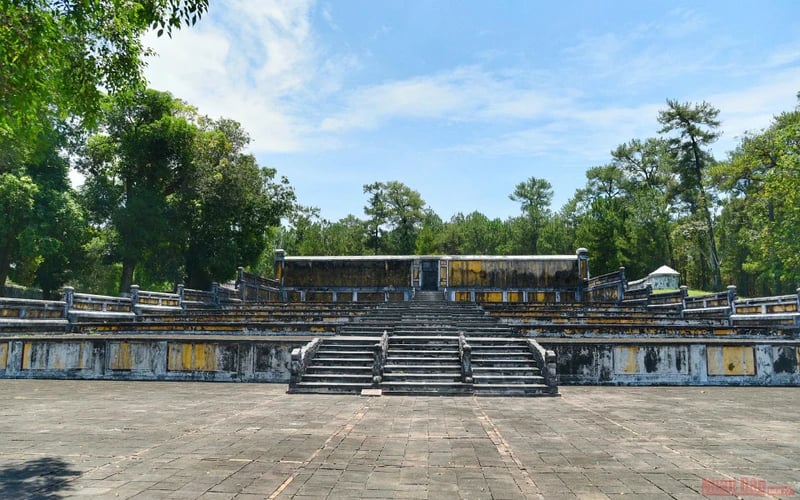

Merging Phu Yen and Dak Lak provinces, the new province is expected to be named Dak Lak with beautiful and unique beaches and great potential for this industry.
Emperor Gia Long's real name was Nguyen Phuc Anh, born in 1762. He was the emperor who founded the Nguyen Dynasty - the last dynasty in Vietnam's feudal history - ascended the throne in 1802, used the reign name "Gia Long" and ruled the country until his death in 1820.
Also under King Gia Long, the national name Vietnam was first officially used in 1804.
Gia Long Tomb, also known as Thien Tho Tomb, was built from 1814 to 1820. This is a complex of many mausoleums of King Gia Long's royal family.
Today, Gia Long Tomb is located in a wild, green mountain area in Huong Long Commune, Huong Tra Town, Thua Thien Hue Province. The entire area consists of 42 hills and mountains, large and small, of which Dai Thien Tho Mountain is the largest, located in front of the tomb and is the name of this mountain range.
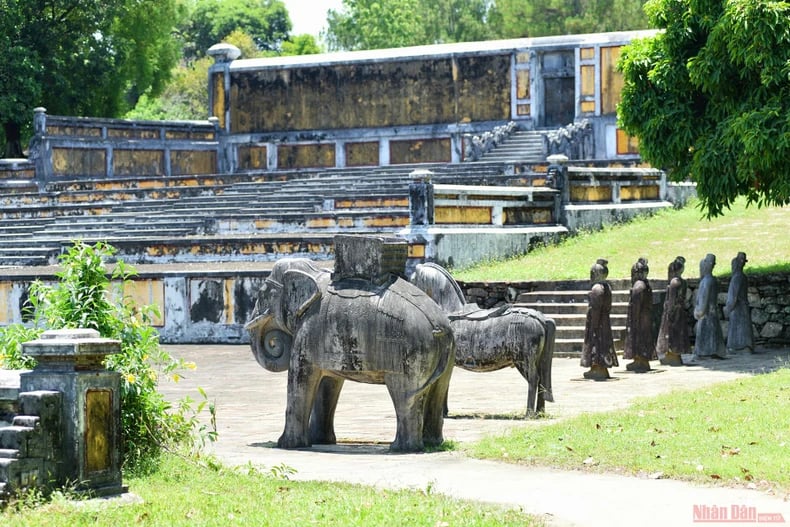
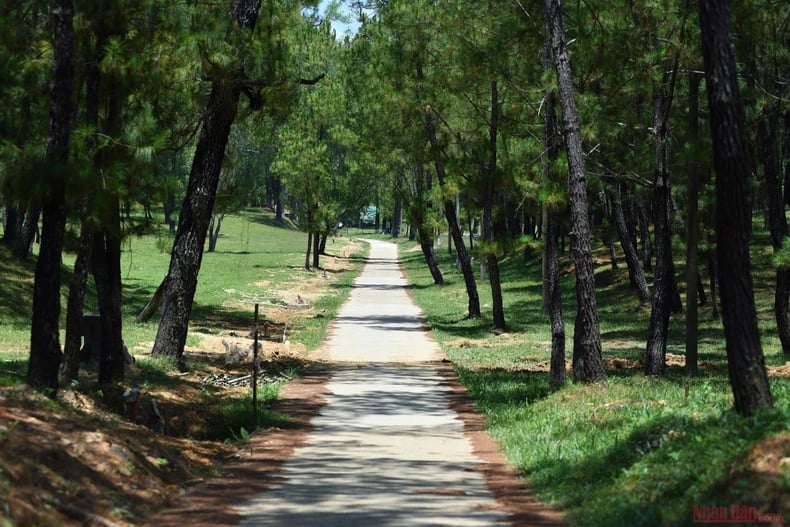
The road to Gia Long-Tho Lang tomb in Hue city passes through a large pine forest.
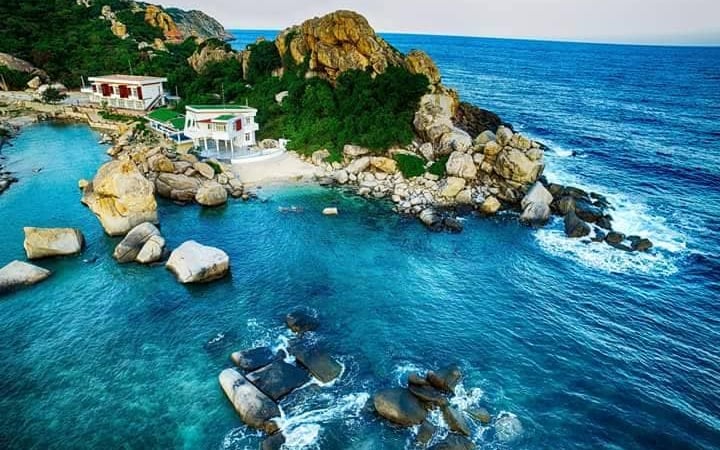
The two provinces of Ninh Thuan and Khanh Hoa merged, the merged province has a "special treasure", the whole country only has one.
The nature here, the green pine forest, has created a natural border for the mausoleum, because Gia Long mausoleum did not have a surrounding wall like the mausoleums of other Nguyen kings.
Previously, the only means of transport to get here was by water, by ferry of local people or by large boat going down the Huong River past Thien Mu Pagoda, Hon Chen Temple...
Because of its remote location, very few people visit, Gia Long mausoleum is always deserted, quiet and dilapidated.
Today, visitors can visit Gia Long tomb by two ways: the pontoon bridge built by the locals across the Ta Trach river, the second way is the main road running through Tuan bridge, through the Minh Mang tomb, and continuing across Huu Trach bridge across the river of the same name.
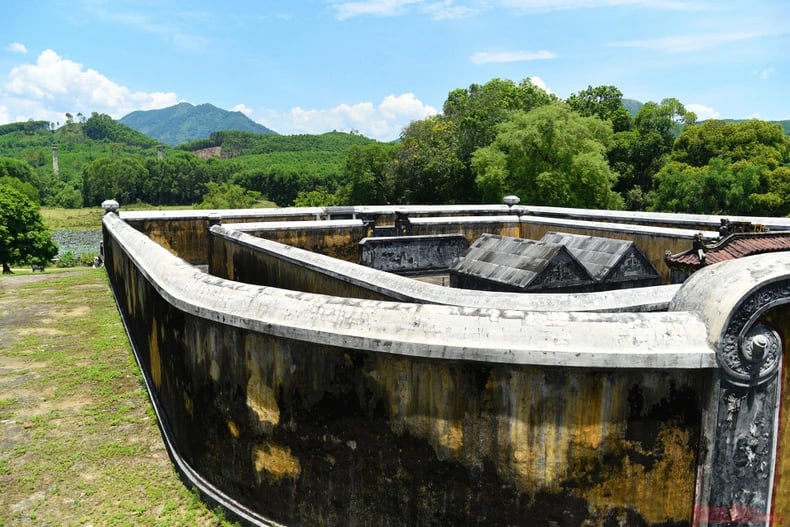
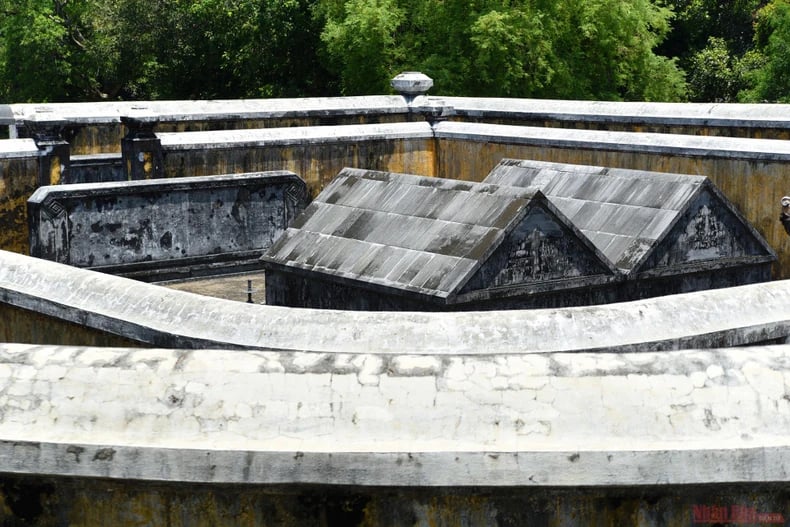
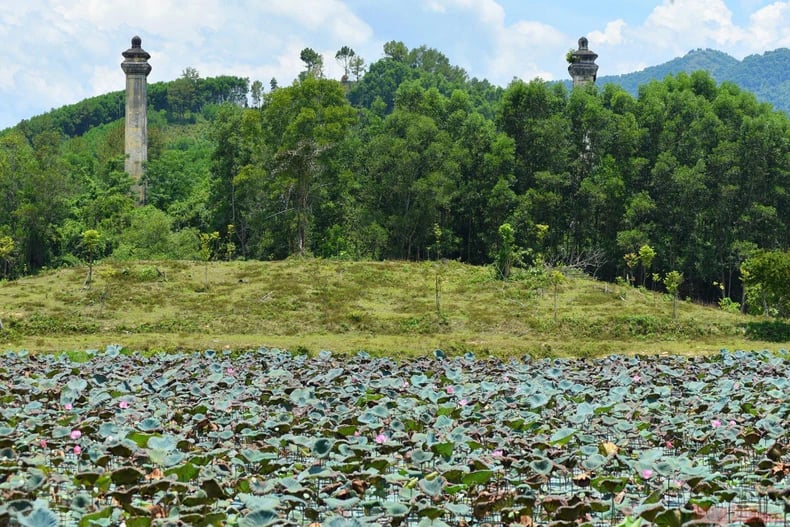
At the end of the pine forest, you will see two giant, majestic pillars located at the outermost part of the mausoleum. These pillars were built to signal and remind people to be respectful and not make noise when passing through this area.
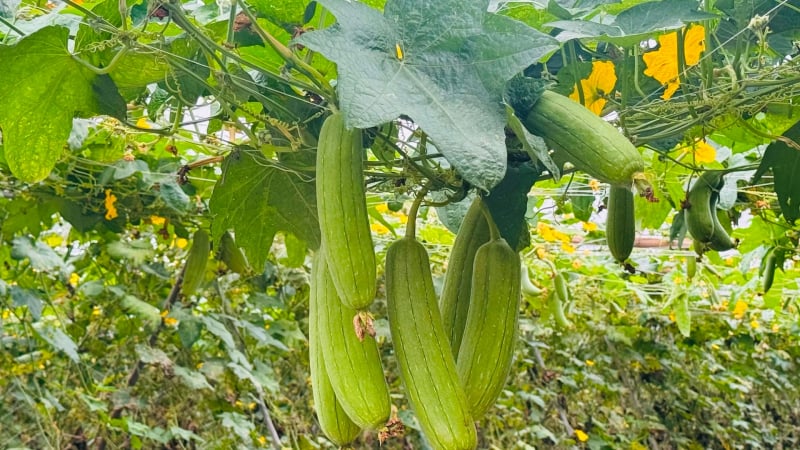
Delicious fruits hang everywhere in the fields. People in this district in Hai Duong can pick them and get money.
Originally there were 85 such pillars surrounding it, today due to the ravages of time only two remain.
King Gia Long's tomb is located on a flat hill, in front is Dai Thien Tho mountain, behind are seven mountains as the back of the head, on the left and right are 14 mountains called "Ta Thanh Long - Huu Bach Ho". The tomb is divided into three areas.
In the center is the tomb of King Gia Long and the tomb of Queen Thua Thien Cao. This is the most special thing among the Nguyen kings' tombs, the only one here has both the king and the queen in the tomb.
The reason is because Queen Thua Thien Cao was the wife who "tasted hardships" with the king, always stood by King Gia Long from the time of fleeing, fighting, until ascending to the throne... so the king allowed her to accompany him after his death.
Play
00:00
00:19
00:32
Mute
Play
Powered by
GliaStudio
close
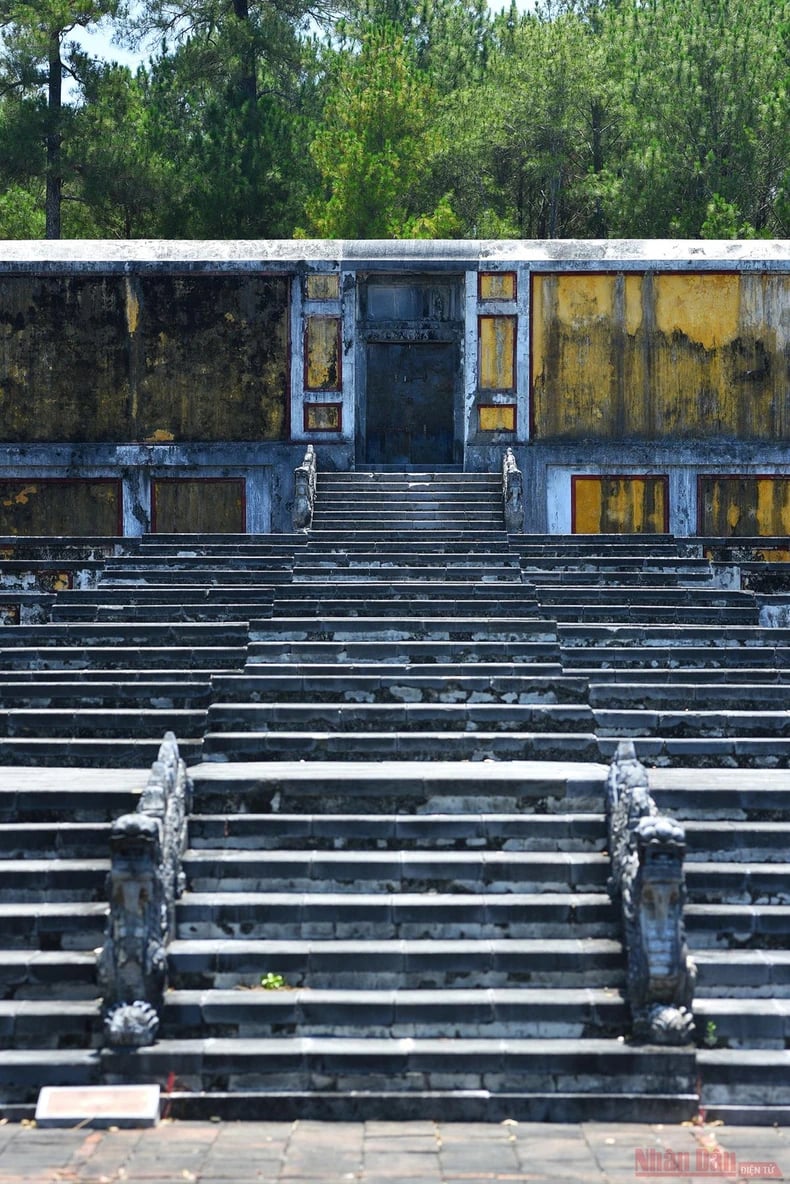
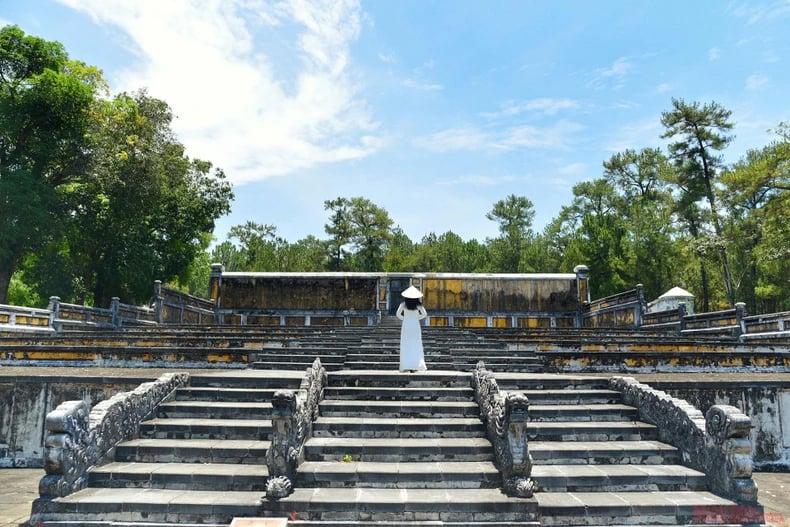
These are two ancient stone tombs placed next to each other, in the form of a stone chamber, buried together according to the concept of "Can Khon Hiep Duc", a beautiful image of happiness and loyalty.

Poor people's fish swim thickly on the water surface, people in the West used to ignore it, now they want to eat it and "look for it with red eyes"
King Gia Long's tomb is on the right looking from the outside, in the middle of the two ancient tombs along the radial axis is Dai Thien Tho peak.
Two ancient stone tombs are only a hand's breadth apart, the same size, without any patterns, carvings, or gilding, and over time have gradually turned gray-black.
Protecting the outside of the tomb is a solid wall called "Buu Thanh". There are seven levels of sacrificial courtyards leading up to Buu Thanh.
The bronze gate of Buu Thanh is the place leading to the eternal resting place of the king and queen. This gate is only opened a few times a year on holidays, death anniversaries... for repair and cleaning.
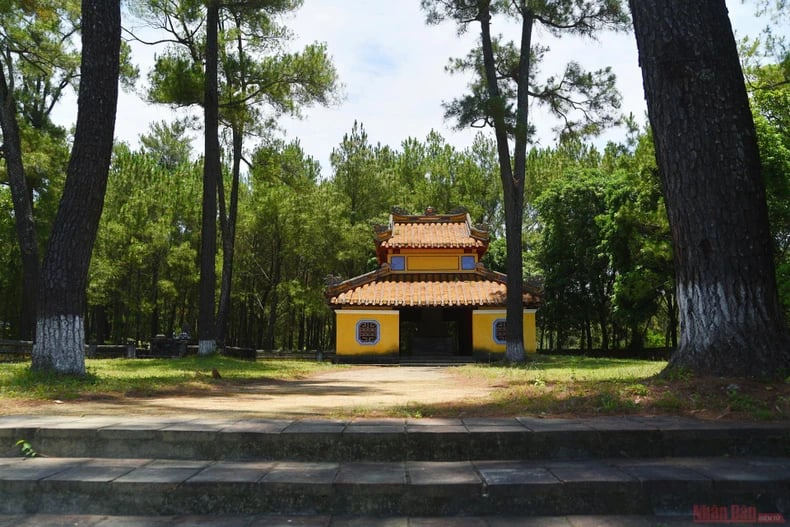


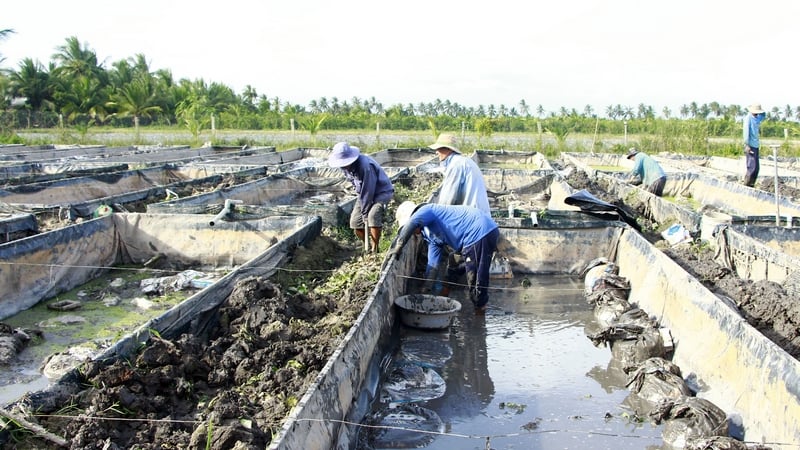
Making a cage in the field for the popular specialty that gives birth in abundance in a place in Vinh Long province
Below the seven levels of the sacrificial courtyard is the audience courtyard, on both sides are two rows of stone statues of civil and military mandarins standing in attendance, in addition there are also stone statues of war elephants and war horses.
To the left of the mausoleum is Bi Dinh, built in the middle of a pine forest.
Bi Dinh is a stele house recording achievements, a familiar architectural work found in most of the tombs of Nguyen Dynasty kings.
In Bi Dinh, there is a stele "Thanh Duc than cong" with delicate carvings, the words are still clear after nearly 200 years. This is the stele that King Minh Mang erected to praise his father King Gia Long.
Bi Dinh covered with familiar glazed tiles under the Nguyen Dynasty. Glazed tiles were the material used to build the Capital, Imperial City, Forbidden City, palaces, mausoleums,...
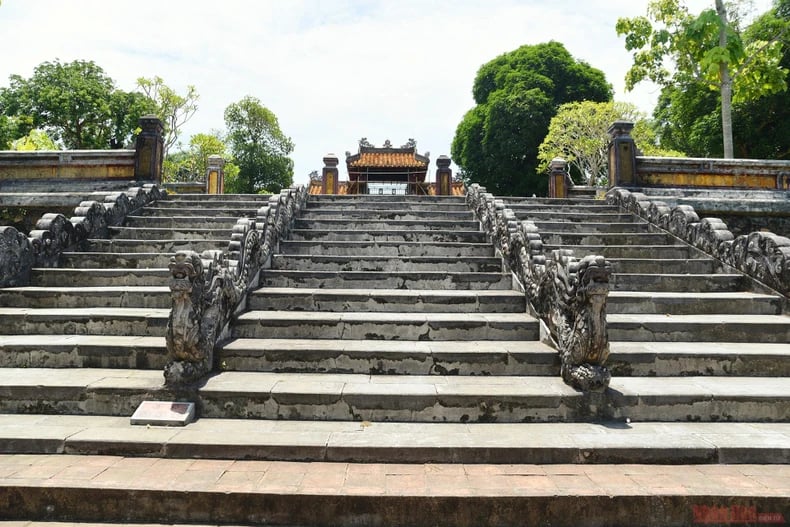
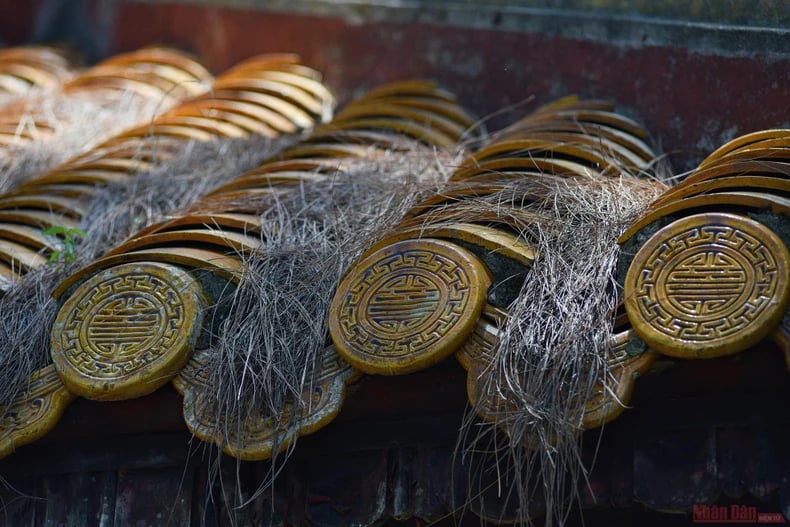
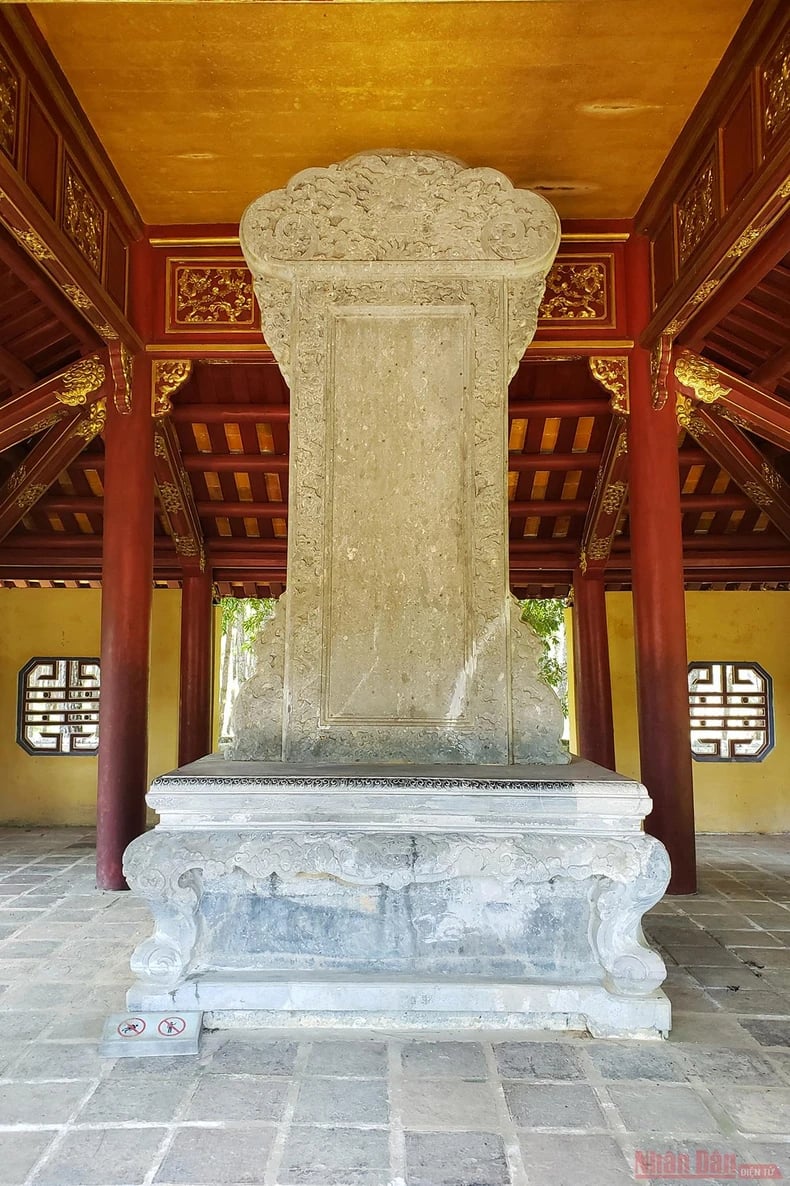
To the right of the mausoleum is the shrine area with Minh Thanh Palace as the center. Minh Thanh Palace is the place to worship and burn incense to pay respect to the emperor and the first queen, Queen Thua Thien Cao.
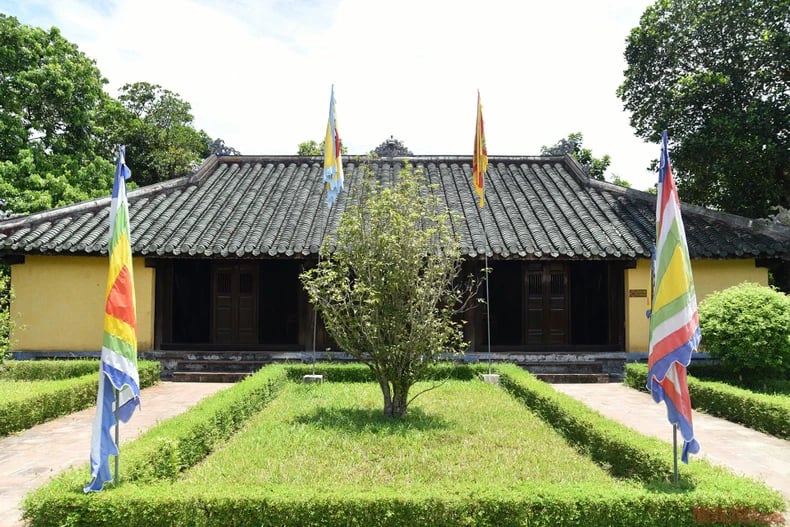
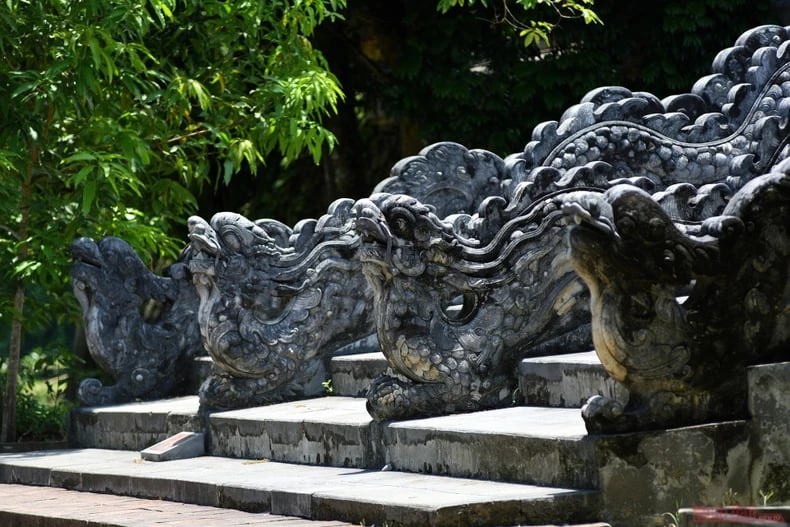
Three steps leading up to the shrine are made up of four majestic stone dragons holding pearls and balls in their hands.
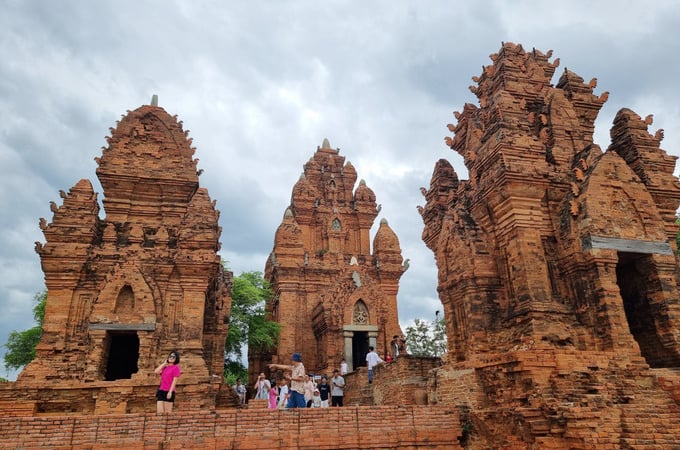
Khanh Hoa and Ninh Thuan provinces are "under one roof", people have similar accents, gentle personalities, and own many Champa towers.
Minh Thanh Palace used to worship many relics associated with King Gia Long's life of war such as hats, belts, and saddles.
Minh Thanh means "brilliant perfection", but surprisingly, this mausoleum is very simple, only bearing the mark of time, not elaborate, not gilded like some mausoleums in other mausoleums.
Gia Long Tomb is also the mausoleum complex of King Gia Long's royal family, including the tombs of the previous Nguyen Lords, the tombs of Lord Nguyen's wives, the tombs of King Gia Long's mother, the tombs of the king's sister...
Besides the mausoleum of King Gia Long and the queen, the next most notable and beautiful mausoleum is Thien Tho Huu mausoleum, the burial place of King Gia Long's second wife - Queen Thuan Thien Cao.
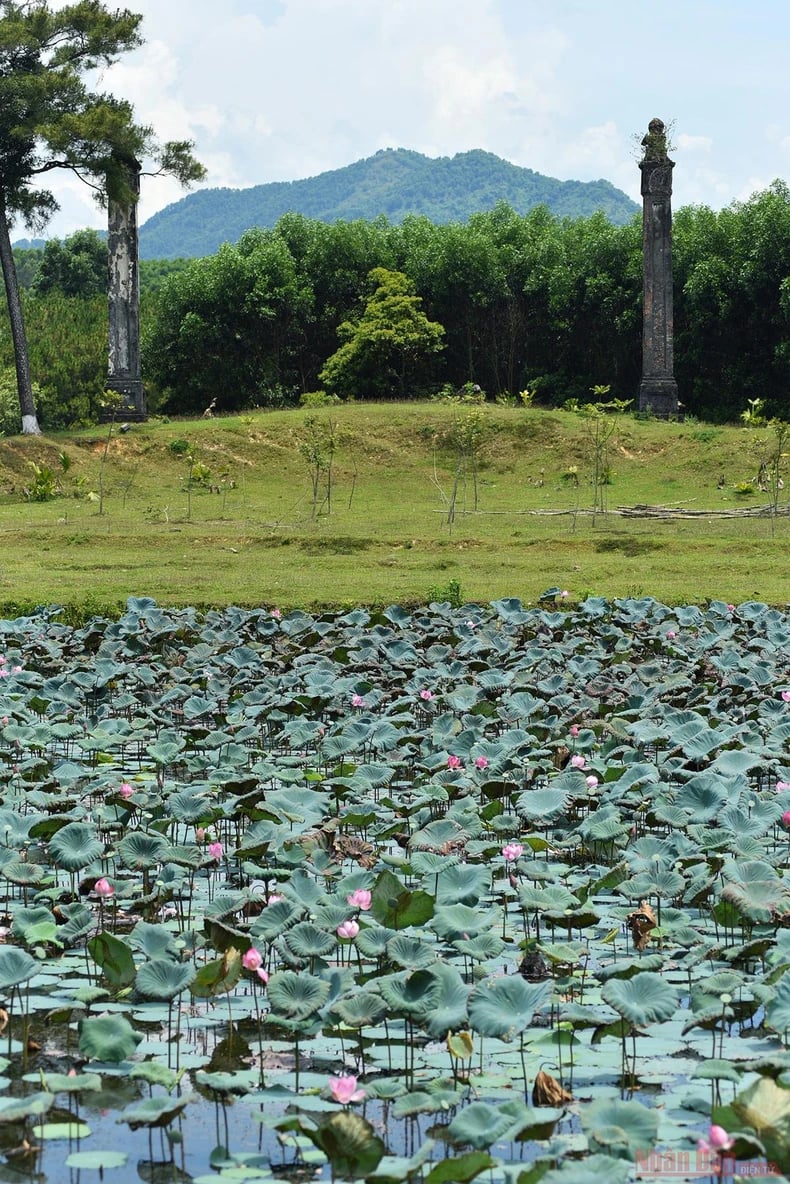
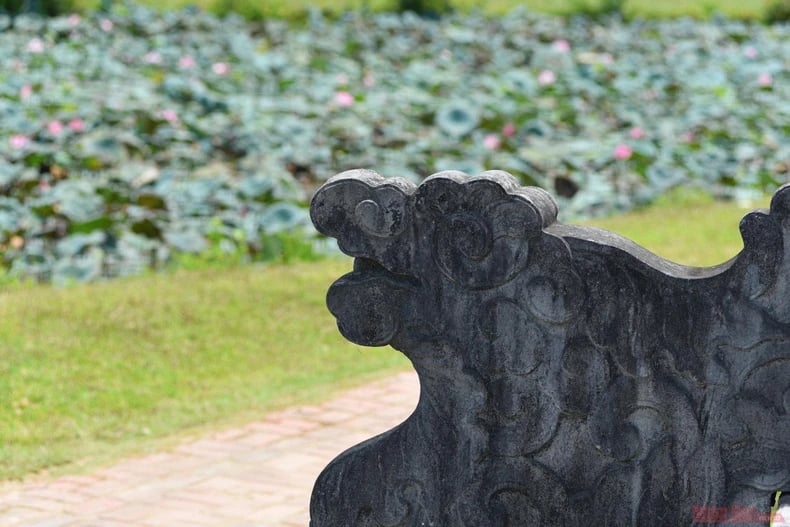

At this time (July 2020), Thien Tho Huu tomb is under renovation and conservation... along with a number of other works of Gia Long tomb.
Empress Thuan Thien Cao's real name was Tran Thi Dang, her honorific title was Thanh To Mau, and her hometown was Thanh Hoa.

What is the forbidden tree in Ha Giang that the authorities went to destroy and when they discovered it, some people even chopped off the fruit?
She and Queen Thua Thien Cao were the two wives who had been with King Gia Long since his humble beginnings. She was the mother who gave birth to King Minh Mang, the second emperor of the Nguyen Dynasty, who succeeded his father King Gia Long.
In front of the gate of Thien Tho Huu tomb is a vast lotus pond, with a pair of dragons at the foot of the stone steps looking straight at the pair of giant pillars in the distance.
Lotus flowers are densely blooming in front of the mausoleum. Summer is also the best season to visit Gia Long mausoleum and Thien Tho Huu mausoleum. It is both the lotus season and the most beautiful sunset season.
Every time the afternoon falls, the entire mausoleum, lotus lake, mountains, hills, and pine forests appear majestic and magnificent, but also lonely and quiet.
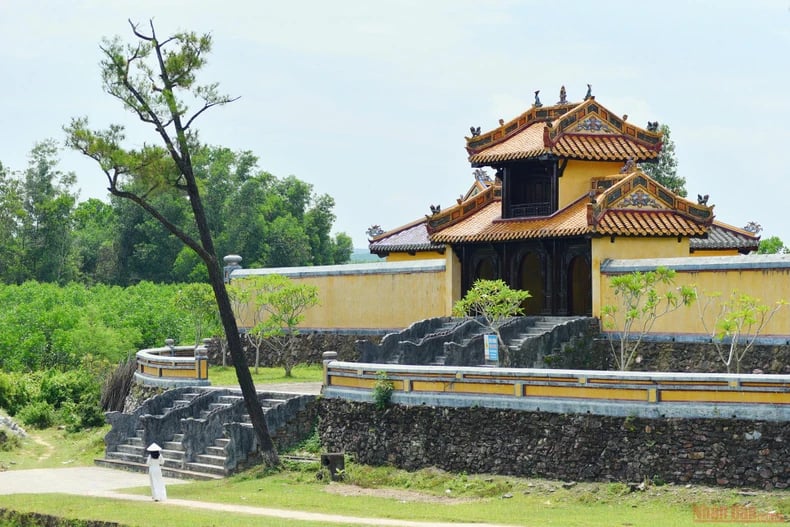
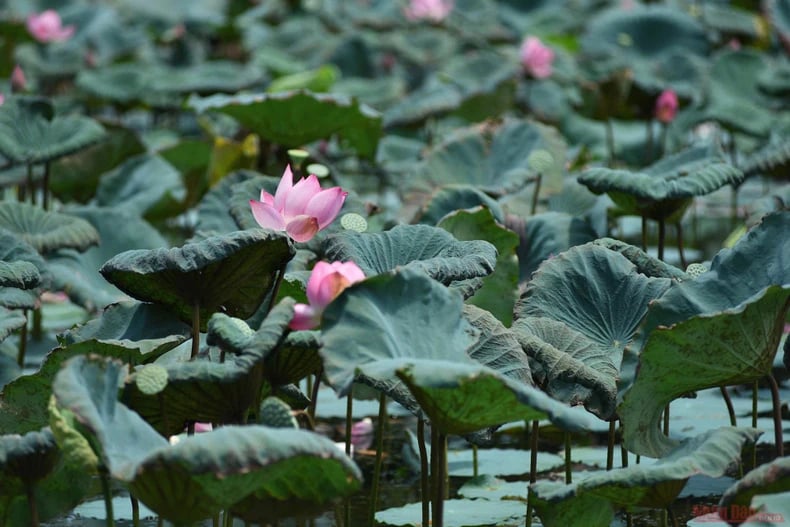
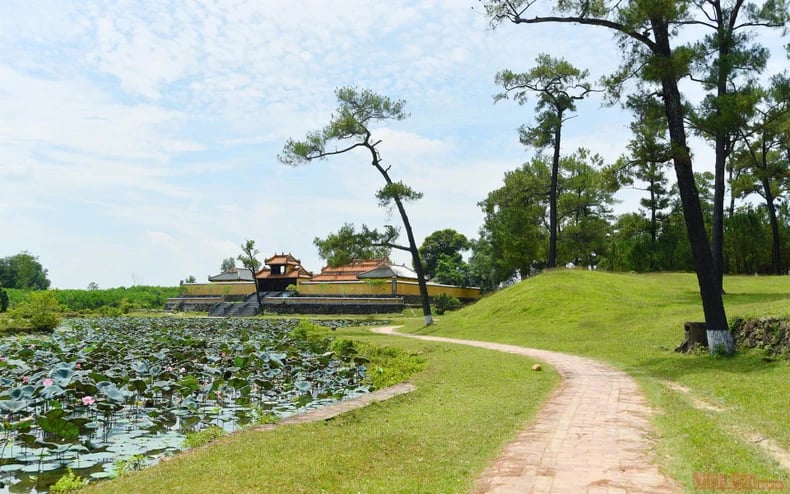
Panoramic view of Gia Thanh Palace, where King Minh Mang's mother is worshiped, located next to her tomb on the right.
Gia Thanh Palace is an architectural work modeled after Minh Thanh Palace, also simple, not fussy...
However, this is the most popular and harmonious work of the entire Gia Long Emperor mausoleum system.
Source: https://danviet.vn/lang-mo-ong-vua-dau-tien-nha-nguyen-lai-dat-o-xa-kinh-thanh-hue-nhat-vi-sao-d1326143.html


![[Photo] General Secretary attends special art program "Spring of Unification"](https://vphoto.vietnam.vn/thumb/1200x675/vietnam/resource/IMAGE/2025/4/29/e90c8902ae5c4958b79e26b20700a980)
![[Photo] Hanoi is brightly decorated to celebrate the 50th anniversary of National Reunification Day](https://vphoto.vietnam.vn/thumb/1200x675/vietnam/resource/IMAGE/2025/4/29/ad75eff9e4e14ac2af4e6636843a6b53)
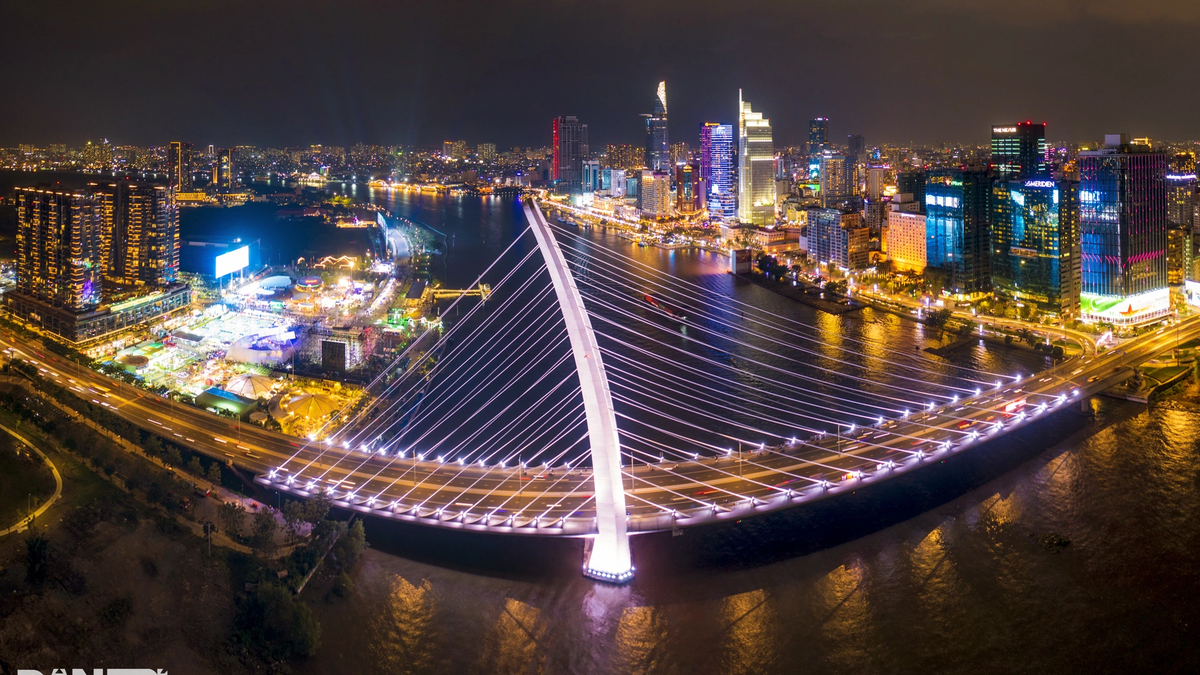
![[Photo] Prime Minister Pham Minh Chinh meets to prepare for negotiations with the United States](https://vphoto.vietnam.vn/thumb/1200x675/vietnam/resource/IMAGE/2025/4/29/76e3106b9a114f37a2905bc41df55f48)
![[Photo] Ho Chi Minh City: People are willing to stay up all night to watch the parade](https://vphoto.vietnam.vn/thumb/1200x675/vietnam/resource/IMAGE/2025/4/29/cf71fdfd4d814022ac35377a7f34dfd1)
![[Photo] Nghe An: Bustling atmosphere celebrating the 50th anniversary of Southern Liberation and National Reunification Day](https://vphoto.vietnam.vn/thumb/1200x675/vietnam/resource/IMAGE/2025/4/29/64f2981da7bb4b0eb1940aa64034e6a7)




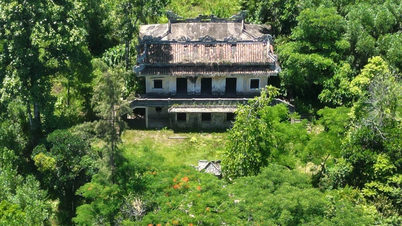





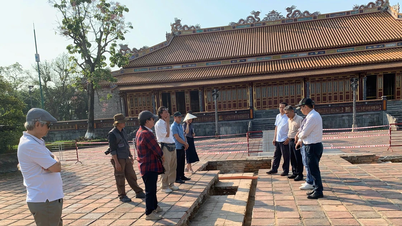






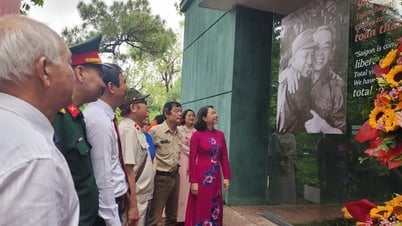





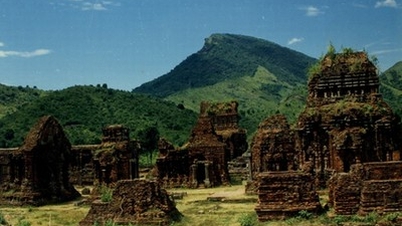
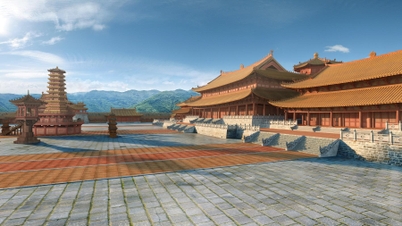



![[Photo] People choose places to watch the parade from noon on April 29](https://vphoto.vietnam.vn/thumb/1200x675/vietnam/resource/IMAGE/2025/4/29/3f7525d7a7154d839ff9154db2ecbb1b)





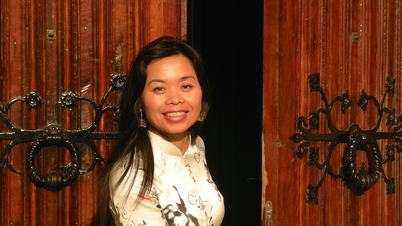

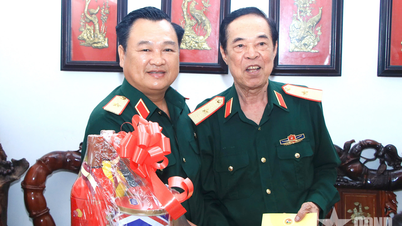
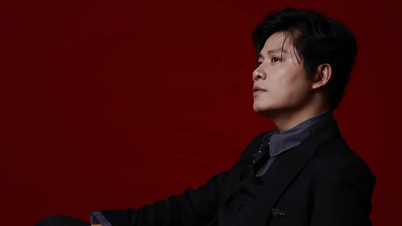



























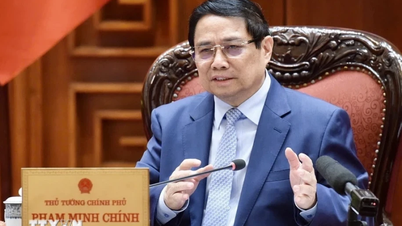

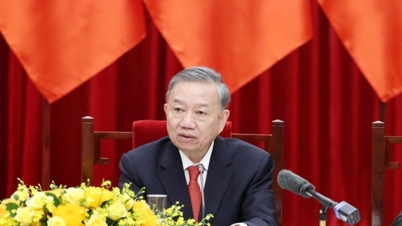


















Comment (0)